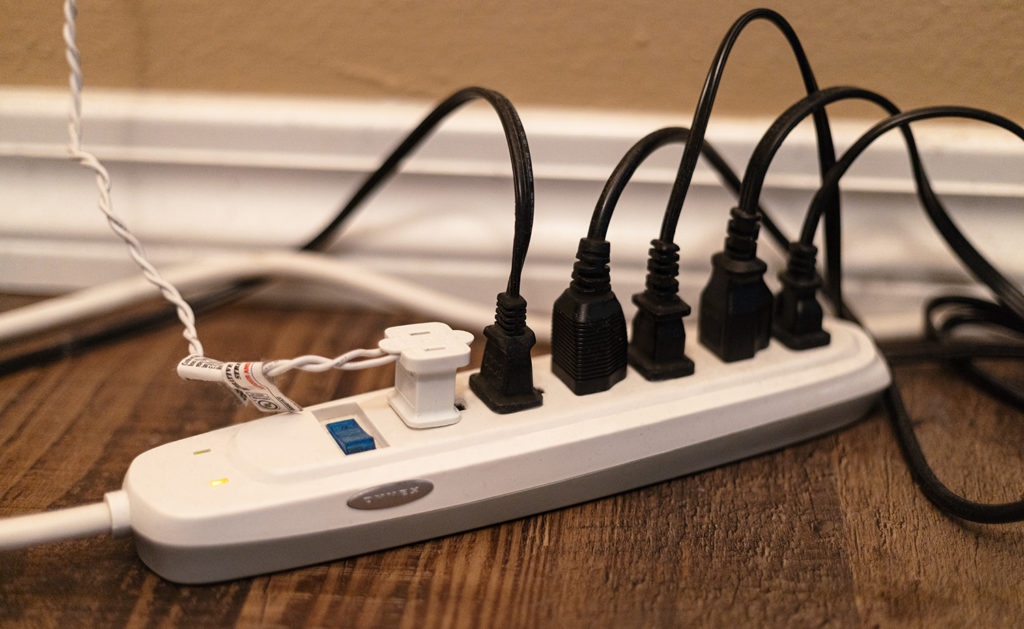Most of us have power strips and surge protectors throughout our homes and offices, sitting next to our televisions, computer desks, kitchen appliances, and more. But what is the difference between the two, and do you know how to tell which is which just by looking? Let’s go over some basic details.

Power Strips
Power strips are a type of extension cord with multiple outlets. Power strips allow you to power multiple devices or appliances in the same area from the same wall outlet, and they often include an “on/off” switch to allow for easy control. They are typically very affordable and come in a range of different styles and sizes.
One downside of power strips is that they can get overloaded by devices that need a lot of power. If you plug in too many devices that exceed the amount of wattage your power strip can handle, you risk electrical failure, overheating, or an electrical fire.
Surge Protectors
A surge protector is a type of power strip that is specifically designed to protect your electronic devices from spikes (or surges) in voltage. A surge can come from many different sources, such as lightning, faulty wiring, or power outages. Small power surges can cause damage to your devices over time, and big power surges (such as those from lightning) can render them permanently unusable. Surge protectors typically cost a little more than regular power strips, but the added protection (and peace of mind) can be worth it if you are dealing with expensive devices.
A general rule of thumb to remember is that most surge protectors are power strips, but power strips are not always surge protectors.
How to Tell the Difference at Home
Many power strips and surge protectors look visually similar. If you’re looking at the power strips you have at home and trying to figure out whether they are surge protectors, it can be difficult to tell just by looking. However, there are a few ways you can tell the difference between the two.
If you still have the original packaging, you can check to see whether your power strip has a joules rating. If it has this rating listed on the packaging, it is a surge protector. A joules rating describes how much energy a surge protector can protect your devices from, whether those energy spikes come in one big surge or little surges over time.
Sometimes, this joules rating is also displayed somewhere on the surge protector itself, which is another way to differentiate between a regular power strip. You may see the joules rating described as a “Voltage Protection Rating” or a “Suppressed Voltage Rating” on older surge protectors. If it doesn’t display these terms, it is likely a power strip.
Which Should You Use?
In most cases regarding expensive devices such as computers, printers, TVs, gaming consoles, stereo systems, or kitchen appliances, you’ll likely want to have some level of surge protection when it comes to electrical outlets. If you are simply looking for an affordable option to increase the number of outlets in a certain area or to access a wall outlet that is hard to reach, a power strip should do the job.
